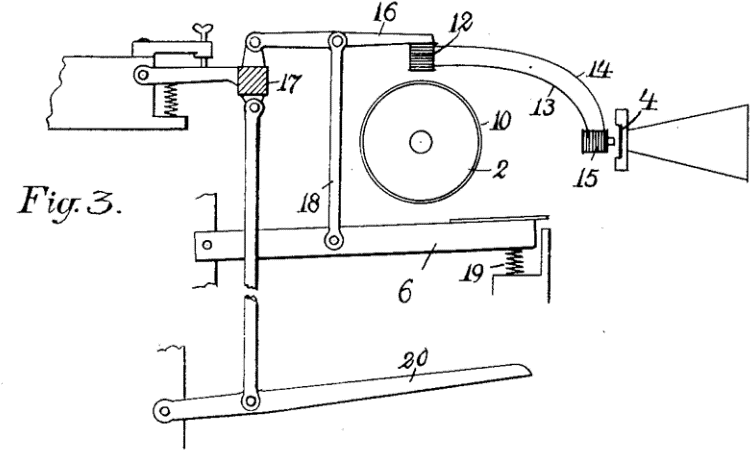🎼 Sound-Producing Device
Co-inventor of the Choralcelo – an electro magnetic organ, Severy also invented and secured patents on a camera, solar heater, printing press and several other items. In addition to inventing, Severy was a musical composer, author and artist. The Choralcelo, an expensive home organ, was sold for social music recitals. The instrument used an electromagnetic tone wheel to generate the organ sounds and also had piano type strings that were struck with piano hammers or that vibrated electromagnetically. It had two keyboards – the upper had 64 notes that sounded like a piano and the lower had 88 notes that worked more as an organ. Later on the Choralcelo was designed to use player piano type rolls for recording and playing music.
Severy was also responsible for numerous patents on inventions as diverse as typewriters (1903), bottling machines (1882), piano-tuning devices (1912), telegraphic systems, steam boilers (1893), steam engines (1894), cameras (1907), orthopaedic shoes, thermo-chemical batteries (1899), solar panels for generating electricity (1894), an iron-lung (1916) and what is probably the first sampling instrument, the ‘Sound Producing Device’ of 1912.
“The object of the present invention is the construction of an improved musical instrument in which the sonorous vibrations are produced electromagnetically by the movement of phonograms of magnetic material past electromagnetic sound producing mechanism.”

[Diagram showing the key-action that moves the magnetic pick-up closer to the sound wheel.g]
It is unknown weather the ‘Sound-Producing Device’ was actually built – Severy didn’t use any similar mechanisms in the Choralcelo – yet the ‘Sound- Producing Device’ predicted the future of sampling instruments such as the Chamberlin and Mellotron by half a century and perhaps invented the concept of sampling. Severy’s device was based around the concept of printing numerous magnetic spectrogram or recorded sounds as endless loops on rotating wheels.
A magnetic pick-up would be placed near the spectrogram disk and in turn, transmit a variable magnetic pulse that would active a speaker membrane – or, in a manner similar to Cahill’s Telharmonium, transmit the signal through the newly established telephone network.
The instrument was to have numerous spectrogram for each note representing the various fundamentals and timbres of the recorded sound – a concept that was new for the time and most likely inspired by H. Helmholtz’s ‘On the Sensations of Tone as a Physiological Basis for the Theory of Music‘ (first published in English in 1875). These different timbres could be mixed using organ-style stops. Variation in pitch was achieved simply by altering the speed of the disc for each note and the volume of each note by keyboard pressure which moved the pick-up nearer to the sonogram disc.
Each note of the instrument had it’s own speaker making the ‘Sound-Producing Device’ fully polyphonic as well as velocity sensitive.
Next topic: Wireless Organ
Sources
Wikipedia / 120years.net / Findagrave